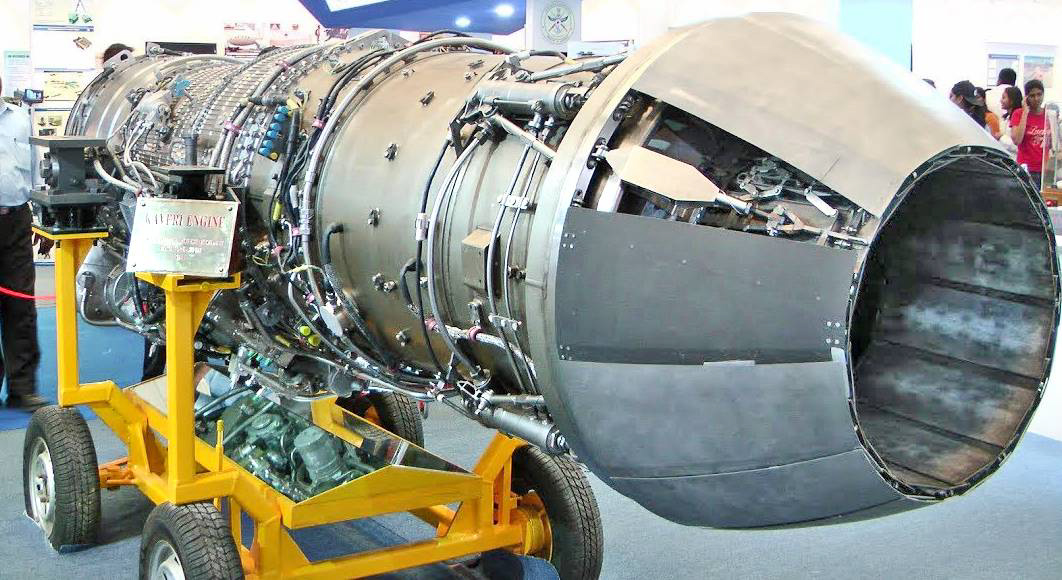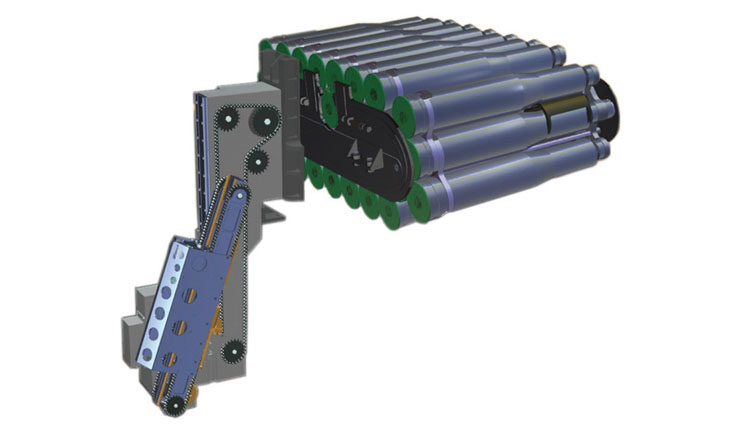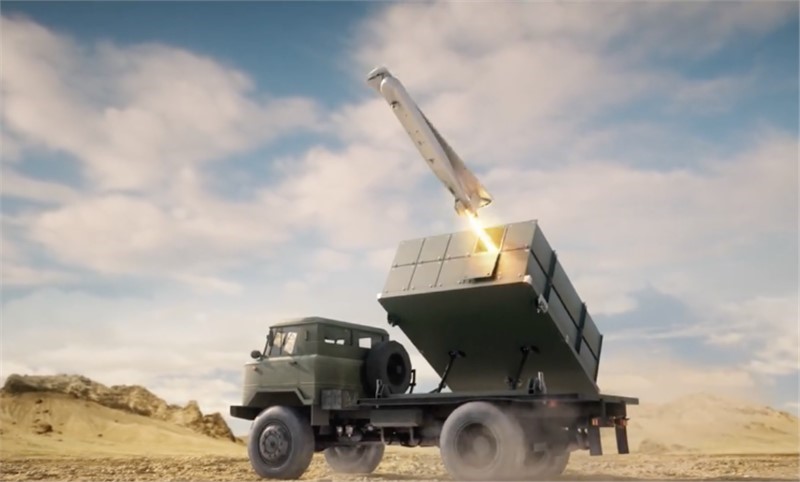Idrw Team
SOURCE: IDRW.ORG


Saab India announced the successful delivery of its AT4 anti-armour weapon system to the Indian Armed Forces, marking a significant milestone in bolstering India’s short-range combat capabilities. Selected through a competitive evaluation process, the AT4, specifically the AT4CS AST variant designed for confined space operations, joins India’s arsenal as a trusted single-shot solution for urban and close-quarters engagements. Amid heightened tensions following the April 22, 2025, Pahalgam attack, the AT4’s induction enhances India’s tactical edge, particularly against armored threats in complex environments.
Selected through a rigorous and competitive evaluation process, the AT4 has now officially joined India’s arsenal as a trusted, single-shot solution for short-range combat scenarios. India has procured the AT4CS AST variant, specifically engineered for operations in confined spaces—making it ideally suited for urban warfare, including use from within buildings, bunkers, and other complex environments.
Continue readingSOURCE: AFI


In the wake of heightened tensions following the April 22, 2025, Pahalgam terrorist attack, which killed 26 tourists and was linked to Pakistan-backed militants, India has intensified its efforts to curb the influence of Pakistani YouTube channels within its borders. Social media posts on X, notably by @kushal_mehra
on April 26 and 28, 2025, indicate that several Pakistani YouTube channels, including those of Syed Muzammil, Aarzoo Kazmi, and Wassey Iffy, are facing bans in India, with users encountering screenshots signaling restricted access.
While many channels remain accessible, the Indian government’s actions suggest a broader campaign to block content deemed anti-India or propagandistic, driven by concerns over disinformation and national security. This escalation, part of India’s multifaceted response to Pakistan’s alleged terrorism sponsorship, marks a new front in the information warfare between the two nations, with significant implications for digital diplomacy and regional dynamics.
Continue readingSOURCE: IDRW.ORG


In a passionate address, Air Vice Marshal Suresh Singh (Retd) has called for India to abandon hopes of co-designing or co-developing the Advanced Medium Combat Aircraft (AMCA) engine with international partners, asserting that no foreign entity will share critical jet engine technology. Speaking with conviction, he emphasized that India must stand on its own feet and develop the 120kN engine indigenously, leveraging its own resources, talent, and determination.
Singh dismissed the notion of foreign technology transfer, stating, “Nobody in the world is going to co-design, co-develop, or give technology to you. Take it from me—100% technology, no one will give.” He argued that global aerospace giants, having invested vast sums of money, time, and resources, are unwilling to share proprietary technologies that could create future competitors. “Why should they lose revenue by giving you the edge?” he questioned, urging India to chart an independent path.
Continue readingSOURCE: IDRW.ORG
)

Hindustan Aeronautics Limited (HAL), India’s premier aerospace and defense manufacturer, is taking a significant step toward enhancing its footprint in civil aviation by pursuing Approved Training Organization (ATO) status for pilot training on the Do-228, also known as the Hindustan-228 aircraft. According to a report by Halldale Group, this move aims to establish HAL as a key player in regional pilot training, aligning with India’s ambitious Ude Desh ka Aam Nagrik (UDAN) scheme to boost regional connectivity.
By offering certified training for the 19-seater commuter aircraft, HAL seeks to support operators, reduce training costs, and strengthen India’s aviation ecosystem, all while leveraging its decades of experience in manufacturing and maintaining the Dornier-based platform.
Continue readingSOURCE: IDRW.ORG


Hyderabad-based VEM Technologies’ Managing Director, V. Venkat Raju, has expressed strong confidence in the Indian private sector’s capability to develop the 120kN engine for the Advanced Medium Combat Aircraft (AMCA), while underscoring the need for government support in critical areas. Speaking at a recent panel discussion, Raju outlined the industry’s strengths, identified gaps, and provided insights into the budget, timeline, and strategic considerations for this ambitious project.
Raju highlighted the transformation of India’s aerospace industry, which has gained significant expertise in system engineering, system integration, and process automation. “The industry has developed a deep understanding of materials, expertise in building test equipment, and strong engineering capabilities,” he said, noting that VEM Technologies alone employs nearly 800 engineers across multidisciplinary areas. With advanced design and analytical tools, the industry can accelerate engine simulation, making development faster and more efficient.
Continue readingSOURCE: IDRW.ORG


The Indian Space Research Organisation (ISRO) and the Defence Research and Development Organisation (DRDO) are intensifying efforts to develop their own long-range radar systems to monitor space for debris and potential offensive systems, spurred by increasing Chinese activity in the space domain. This strategic push also comes in the wake of a sobering incident in April 2022, when debris from a Chinese CZ-3B rocket, initially predicted by the U.S. Space Command (USSPACECOM) to impact near Myanmar and the Arabian Sea, instead crashed over India, scattering rocket nozzles, rings, and fuel tanks across populated areas.
The CZ-3B incident highlighted critical gaps in India’s space situational awareness (SSA) capabilities. USSPACECOM’s Space-Track portal had forecasted the uncontrolled re-entry of the rocket’s upper stage on April 2, 2022, projecting a splashdown in the Indian Ocean. However, the debris defied predictions, raining down over Maharashtra and Gujarat, with fragments landing perilously close to residential zones. Posts on X at the time expressed alarm over the lack of precise tracking, with one user noting, “India can’t keep relying on foreign alerts—our skies need our own eyes.” This event underscored the urgent need for indigenous systems to safeguard India’s space assets and population from such hazards.
Continue readingSOURCE: IDRW.ORG


In a significant development for India’s defense modernization, the Combat Vehicles Research and Development Establishment (CVRDE), a key laboratory under the Defence Research and Development Organisation (DRDO), is likely to partner with Jeanuvs Private Limited to develop autoloaders for the Indian Army’s Future Ready Combat Vehicle (FRCV) “Ranjeet” project. This collaboration, stemming from a Request for Proposal (RFP) issued by CVRDE in January 2025, marks a crucial step in enhancing the technological capabilities of India’s next-generation armored fighting vehicles (AFVs).
The FRCV “Ranjeet” project, named after the iconic Maharaja Ranjit Singh, aims to replace the Indian Army’s aging fleet of T-72 main battle tanks with a modern, indigenous platform designed for future warfare. Envisioned as a multi-role combat vehicle, the FRCV is expected to feature advanced technologies like AI-driven systems, network-centric warfare capabilities, and modular armor, ensuring superior firepower, mobility, and survivability across diverse terrains . The project, which received Acceptance of Necessity (AoN) from the Defence Acquisition Council (DAC) in September 2024, plans to induct 1,770 units in three phases by 2030, with each phase incorporating incremental technological advancements .
Continue readingSOURCE: IDRW.ORG


In a significant display of naval air defence capability, INS Surat, the latest stealth guided-missile destroyer of the Indian Navy, has successfully carried out a “precision cooperative engagement” against a sea-skimming target, showcasing India’s growing mastery in network-centric warfare.
According to official statements, the ship executed a high-precision missile interception during a recent trial, where a Medium-Range Surface-to-Air Missile (MRSAM) was launched to destroy a low-altitude incoming threat. The engagement was described as “cooperative,” strongly suggesting that the targeting data or mid-course guidance was provided by a second platform, potentially another warship or an airborne asset in the vicinity.
Continue readingSOURCE: IDRW.ORG


The Indian Army is actively pursuing the development of a long-range mobile launcher system for loitering munitions, capable of striking targets beyond 300 km from truck-mounted platforms. This ambitious initiative, driven by the need to counter advanced threats along India’s borders with China and Pakistan, marks a significant shift from the Army’s current inventory of short- to medium-range loitering munitions, such as the Nagastra-1, which have ranges of 30-100 km and are designed for man-portable operations.
According to defence sources close to idrw.org, the Army is engaging both public and private sector companies to meet this requirement, with preparations underway to issue a Request for Information (RFI) soon. This move underscores India’s strategic push to bolster its precision strike capabilities and adapt to the evolving dynamics of modern warfare, where long-range loitering munitions are proving to be game-changers.
Continue readingSOURCE: IDRW.ORG


Hyderabad-based Eon Space Labs Pvt Ltd, a rising star in India’s space-defence ecosystem, has unveiled its latest breakthrough—the Buho225, an advanced infrared imager designed for maritime surveillance. Showcased in April 2025, this cutting-edge electro-optical infrared (EO-IR) system promises to redefine coastal and naval operations with its compact design, high-resolution imaging, and robust performance in challenging maritime environments.
As India pushes for self-reliance under the “Make in India” initiative, the Buho225 positions Eon Space Labs as a key player in delivering indigenous solutions for national security. This article explores the capabilities of the Buho225, its strategic significance, and Eon Space Labs’ growing footprint in defence technology.
Continue readingSOURCE: IDRW.ORG

The Border Security Force (BSF), India’s premier border guarding force, has initiated trials for the Ugram, a new 7.62mm indigenous assault rifle developed by the Defence Research and Development Organisation (DRDO), as a potential replacement for the ageing 5.56mm INSAS rifle. Reported by The Tribune on April 21, 2025, the BSF has requested 10 Ugram rifles and ammunition for rigorous evaluation, marking a significant step toward modernizing its arsenal with a larger-calibre, fully indigenous weapon.
This move aligns with the Indian Army’s adoption of 7.62mm platforms like the AK-203 and SIG-716, reflecting a broader shift toward enhanced stopping power for counter-insurgency and border operations. As India pushes for self-reliance under the “Make in India” initiative, the Ugram’s trials could pave the way for a cost-effective, domestically produced standard-issue rifle for the BSF’s 265,000 personnel.
Continue readingSOURCE: IDRW.ORG


In a significant step toward deepening defense ties, the Indian Air Force (IAF) and the Vietnam People’s Air Force (VPAF) have embarked on a collaborative initiative centered on the Airbus C-295 transport aircraft. Under this agreement, Vietnamese technical personnel will receive specialized training from the IAF to enhance their familiarity with the C-295M, a versatile medium tactical airlifter. This cooperation not only strengthens bilateral relations but also positions India as a regional hub for C-295 maintenance, repair, and overhaul (MRO), offering a strategic advantage to operators worldwide.
The VPAF currently operates three C-295M aircraft, which have proven their worth in tactical transport, humanitarian missions, and disaster response. Meanwhile, the IAF is poised to become the world’s largest operator of the type, with 56 C-295MW units on order as part of a ?21,935-crore deal signed in 2021 with Airbus Defence and Space. The first seven IAF aircraft have already been delivered from Seville, Spain, with the remaining nine of the initial 16 flyaway units expected by August 2025. From September 2026, Tata Advanced Systems Limited will manufacture the remaining 40 aircraft at a state-of-the-art Final Assembly Line (FAL) in Vadodara, Gujarat, marking India’s first private-sector military aircraft production.
Continue readingSOURCE: IDRW.ORG


In 2023, the International Panel on Fissile Materials estimated that India possesses approximately 680 kilograms of weapon-grade plutonium, sufficient to produce 130 to 210 nuclear warheads. This assessment, detailed in reports from the Bulletin of the Atomic Scientists, underscores India’s growing nuclear capabilities, driven by its unsafeguarded reactors and stockpiles of fissile materials.
However, analyses by researchers like Syed Sadam Hussain Shah and Syed Javaid Khurshid, affiliated with Pakistan’s Center for International Strategic Studies and Atomic Energy Commission, suggest a far larger potential, estimating India’s capacity at 356 to 492 plutonium-based nuclear weapons. A 2017 discussion paper by Mansoor Ahmed for Harvard University’s Belfer Center takes this further, projecting a staggering capacity of up to 2,686 nuclear weapons if India leverages its reactor-grade plutonium stockpile. These divergent estimates, combined with India’s reactor infrastructure and fissile material reserves, highlight the complexity and strategic implications of India’s nuclear program as of April 2025.
Continue readingSOURCE: IDRW.ORG


Hindustan Aeronautics Limited (HAL), a linchpin of India’s defence manufacturing, finds itself at a crossroads as it grapples with the fallout from the grounding of over 330 Advanced Light Helicopters (ALHs) following a fatal Indian Coast Guard crash in January 2025. The incident, which claimed lives and exposed potential flaws in the ALH platform, has sparked widespread concern among the armed forces, the Ministry of Defence (MoD), and the domestic defence community.
Yet, HAL’s response—a mix of defensiveness, deflection, and disdain for its critics—has done little to inspire confidence. Instead, it reveals a troubling organisational hubris that threatens to undermine India’s self-reliance in defence.
Continue readingSOURCE: IDRW.ORG


In a landmark development for India’s defense industry, Vietnam is set to become the second Asian nation after the Philippines to acquire the BrahMos supersonic cruise missile, with a deal valued at approximately ?5,990 crore (around $700 million). This agreement, reported on April 17, 2025, underscores India’s growing prowess as a global exporter of advanced weaponry and strengthens its strategic partnership with Vietnam amid rising maritime tensions in the South China Sea. The BrahMos missile, a product of a joint venture between India’s Defence Research and Development Organisation (DRDO) and Russia’s NPO Mashinostroyeniya, is poised to enhance Vietnam’s defense capabilities while cementing India’s role in the Indo-Pacific security architecture.
The deal comes at a time of heightened geopolitical tensions, with China’s assertive actions in the South China Sea prompting Southeast Asian nations to bolster their defense capabilities. For India, the agreement aligns with its broader strategic objectives of stabilizing its northern borders with China while supporting a secure Indo-Pacific through partnerships like the Quad. The BrahMos export to Vietnam is a delicate yet purposive move, balancing India’s trade ties with Beijing and its commitment to regional security.
Continue reading